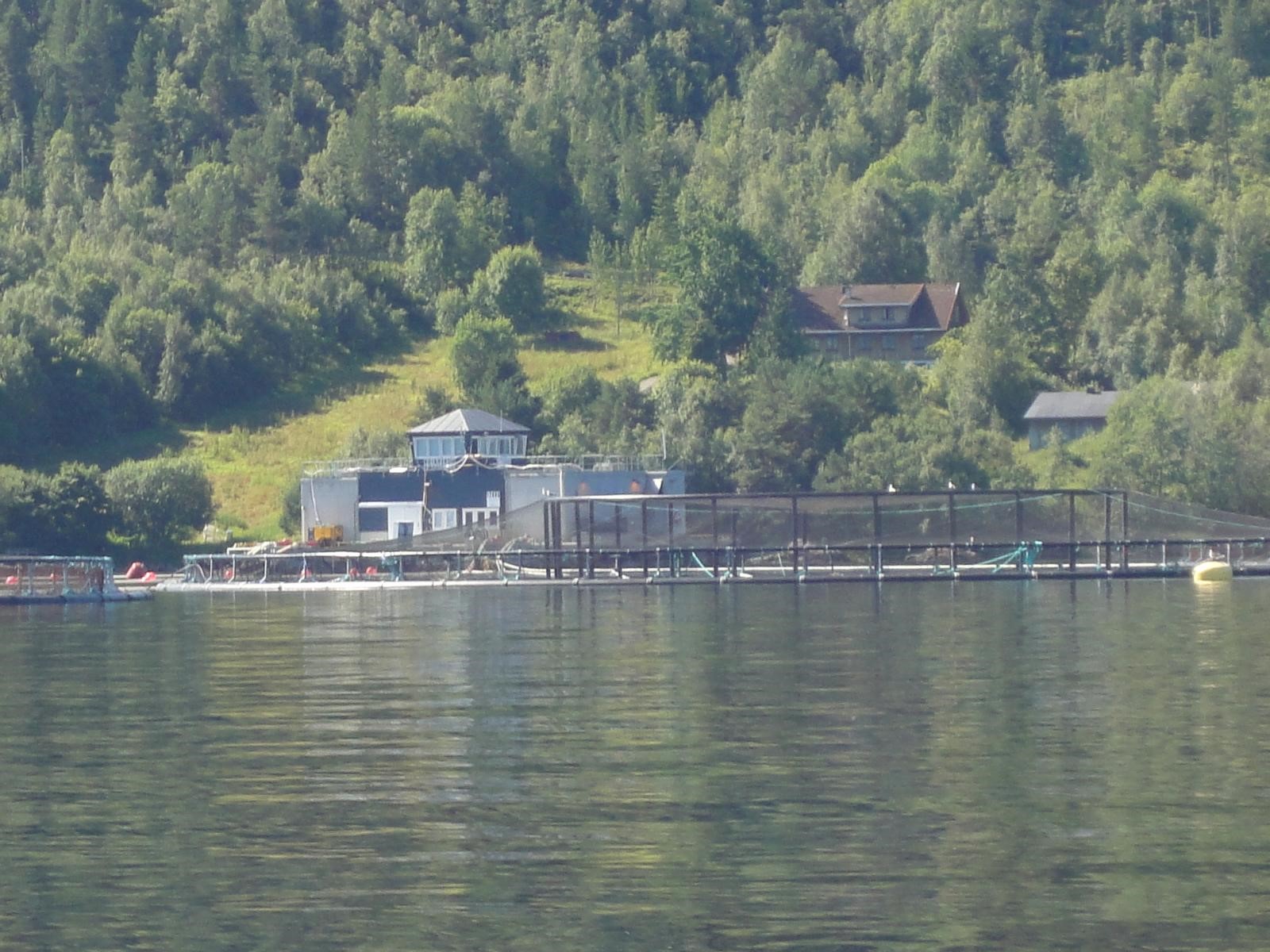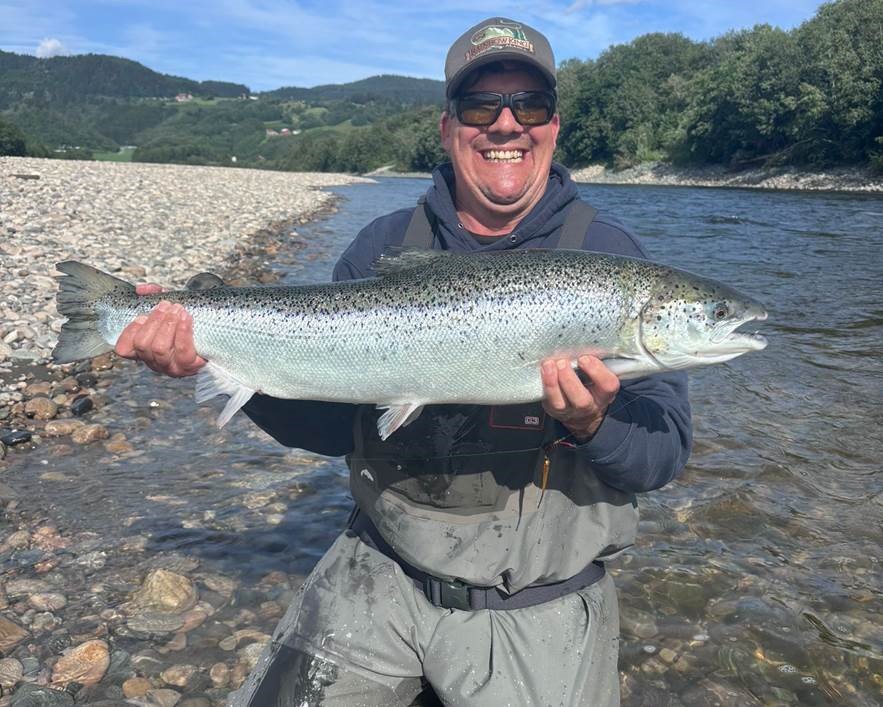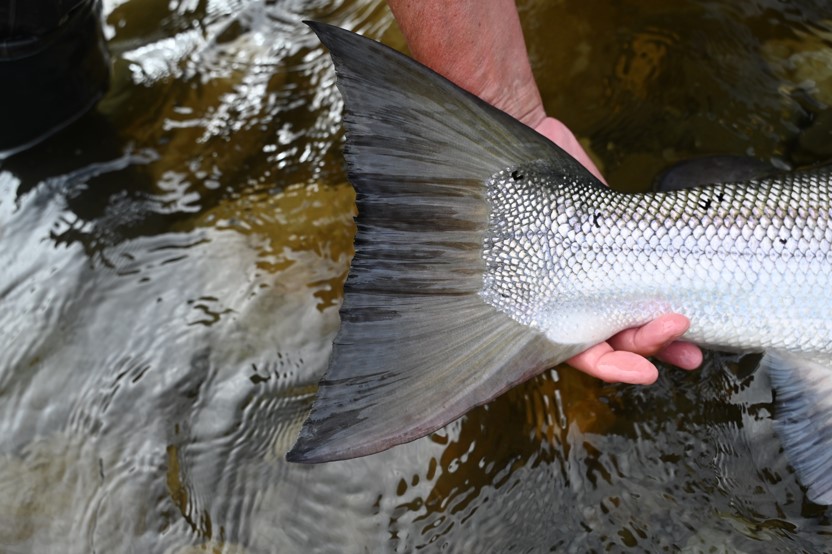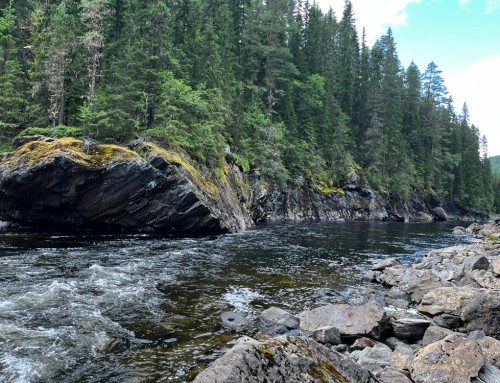The Norwegian Environment Agency (Miljødirektoratet) has decided to close 33 of Norway’s most important salmon rivers overnight, from 23 June, initially until 4 July 2024. It disappoints thousands of sport fishermen from all over the world and causes damage in the tens of millions with this decision. The consequences for river owners, organisers, hobby anglers and, above all, for the wild salmon itself are serious. The environmental directorate has either not considered these consequences for all involved parts, or consciously accepts them. In any case, a general fishing ban has a negative effect for years and even decades and, as is usually the case in such cases, those responsible for it are not tangible.
In July, around the middle of the season, an assessment of the overall situation on the individual rivers is carried out every year. This is to ensure that there are enough spawning fish in the river in autumn. This is a reliable procedure that gives local fisheries administrations the opportunity to introduce permissible restrictions in time if there is a risk that the spawning fish stock is not large enough. Unfortunately, with its decision for a general fishing ban, the Environment Directorate acted hastily and over the heads of the local fisheries administrations. Due to numerous protests and recent findings, the original ban was withdrawn for 16 of the affected rivers from 11 July (see below) .
In a joint statement from the NJFF (Norwegian Hunters and Fishermen’s Association) and Norske Lakseelver (Association of Norwegian River Owners) on 21 June 2024, they said about the fishing stop: ” It is important to emphasise that the local people who manage the fisheries in the individual rivers and the Norwegian Environment Agency have done ‘everything’ right by issuing increasingly strict fishing regulations, which have ensured that more salmon spawn, although fewer wild salmon are returning to the rivers. The toolbox is empty…”.

This male salmon, with a length of 117cm and a weight of 17.2kg, was caught on the afternoon of June 22, 2024 and gently released. It is the largest salmon caught on the Gaula this season and was caught by Mortan A. Carlsen in the Bridge Pool of the International Flyfishers Club.
Unfortunately, this is wrong, because the “toolbox” is not empty, but has not been used enough. There would have been no great difficulty in allowing river administrations to introduce effective restrictions with immediate effect, thus making a general fishing ban unnecessary. An effective restriction could be, for example, the permission to take only 2 salmon up to a maximum of 65 cm per angler, per season. In this context, a restriction on worm fishing should be introduced in any case, as most fish caught using this method will not be released alive. The question arises as to how it is possible that two organisations that are so important for wild salmon, such as NJFF and Norske Lakseelver (the author is a member in both), have overlooked these possibilities?
It would have been possible to limit the killing of fish drastically without necessarily completely stopping fishing on the rivers concerned. Especially with regard to the monitoring and catching of escaped farmed fish, the fishing ban is even directly harmful, because the anglers would have a particularly important function by removing farm escapees, since recently 18,000 large farmed salmon, some of whom have contracted the disease BKD, have broken out of a salmon farm (Lerøy) and are preparing to spawn with the wild salmon. This leads to the contamination of the genes of wild salmon and the loss of the valuable hereditary traits formed over thousands of years of evolution, such as the homing instinct, which enables them to find their way back to their home river after their thousands of kilometers of food migrations in the North Atlantic.
After a good season in 2022 in the major rivers that flow into the Trondheims Fjord, the salmon run in 2023 was significantly worse and in the first three weeks of the 2024 season the salmon runs were extremely poor. From 1 to 22 June 2024, a total of only 598 fish with a total weight of 3,805kg (8,390 lb) and an average weight of 6.4kg (14 lb) were caught on the Gaula. In other rivers it looked even worse in some cases.

Salmon farm in Northern Norway
Norwegian wild salmon stocks have halved over the past four decades and the situation is serious. The main reasons for this have been clearly proven by the Norwegian Scientific Council for Salmon Management for years, according to the 2023 status report for wild salmon stocks: “… The problems for wild salmon are the conditions in the sea. Salmon lice, escaped farmed salmon and infections associated with farmed salmon farming are the biggest threats to wild salmon. Insufficient measures are being taken to stabilize or reduce these threats…”.
It is the aquaculture industry that is destroying wild salmon, not river fisheries. This financially extremely strong industry is the second largest in Norway and influences Norwegian society in most areas. Norwegian politics and the responsible state institutions have not yet enforced sufficient protection of the emigrating wild salmon smolts against the deadly sea lice from the salmon farms, which kill about 30% of the wild salmon offspring every year. Although the scientific facts have proven for decades that the farm salmon that escape from the open net cages every year in large numbers contaminate the genes of wild salmon, sufficient protective measures have still not been introduced. The state institutions did not prevent farmed salmon suffering from bacterial kidney disease (BKD) from being kept in front of Norway’s most important national salmon fjord for months, until many of them escaped. This meant that a dangerous source of infection for wild salmon was accepted. It is often clear that the interests of the aquaculture salmon industry in Norway are more important than the safeguarding of wild salmon, which is on the red list.
The aquaculture salmon industry, which is responsible for the poor state of wild salmon stocks, is not held accountable. The volume of farmed salmon production has reached a level that makes it impossible to protect wild salmon stocks. Instead of finally ensuring effective protection of wild salmon in these areas after decades of inaction, the environmental authority decides to ban fishing for anglers! The timing of the introduction of the fishing ban took place around the same time as the auction of new production concessions for farmed salmon. Fisheries Minister Marianne Sivertsen Næss (replacing Cecilie Myrseth in this role) has granted new licenses to aquaculture companies MOWI and Salmar for a total of NOK 5.4 billion (!) and hailed this as a great success. In this situation, who can still believe the full-bodied assurances of the Norwegian Minister for Climate and the Environment, Andreas Bjelland Eriksen, who is jointly responsible for the fishing ban, when he declares that he wants to do more for wild salmon?

Edward Wentz, United States, caught this farmed salmon with a fly on the NFC water in Kval on June 17, 2024. The fish weighed 7.0 kg and was 85 cm long. Sport fishermen would be the best way to catch the escaped farmed salmon, but unfortunately the Norwegian Environment Agency has decided against it – at the expense of wild salmon. She should be held responsible for her wrong decision!
Consumers interested in their health and the survival of wild salmon can send a clear signal and no longer eat the farm salmon produced in open net cages. Instead, they should demand that the farmed salmon that come to their table come from a production on land.
Farmed salmon consumers all over the world can still count themselves lucky if they have not eaten dead farmed salmon carcasses that have been delivered from Norway to European markets. The critical television discussion about the delivery of farmed salmon carcasses, which had not been slaughtered but died of their own accord, to the (uninformed) European markets was broadcast at prime time. About 10 panelists from different camps took part, including Prof. Trygve Poppe, one of the most important Norwegian salmon experts. Since there was absolutely nothing left during the following days about this scandal in the Norwegian media, the question arises whether the farmed salmon industry is already influencing the Norwegian media landscape to such an extent that particularly negative news about it no longer reaches the public? In any case, the farmed salmon industry has already come a long way with its efforts in this direction.
It even has dominant influence even in public committees that have to decide to which scientists are awarded research contracts. It is not surprising that serious scientists who write the truth no longer receive research contracts if their publications are not in the interest of the farmed salmon industry. The industries lobby, consisting of highly paid lawyers, influential industry associations, highly qualified professionals, and “inclined” scientists, has done a great job of building a moat for this industry. If there were concerns among executives, researchers and other officials in the stately institutions about the endangerment of wild salmon by the aquaculture salmon industry, they were removed from their functions in various ways so that the victory of the industry could be achieved. (cf. “Den nye fisken” p. 141 ff).

This is what the tail of a farmed salmon looks like.

This is the tail of a wild salmon.
It is to be hoped that the few important Norwegian organisations and state institutions that are really committed to the conservation of wild salmon will continue to be involved independently of the “beguiling” influences of the farmed salmon industry. It looks as if the farm salmon industry is speculating that salmon conservationists will lose their interest in protecting wild salmon when wild salmon stocks have largely disappeared, it would enable the representatives of this industry to argue that there is not much wild salmon left to protect anyway and therefore there is nothing to be said against expanding their farm production.
Norway’s plan is to increase farmed salmon production fivefold within the next few years. This would be a disaster. It is important that the Norwegian Government realises that production increases of this magnitude cannot be achieved without sacrificing the Norwegian wild salmon populations. The time is ripe to move salmon production at least to closed systems, but even better to land. Norwegian politicians and their executive bodies should finally take the necessary steps to protect wild salmon and stop accepting the fairy tales of all kinds that have been spread by the farm salmon industry for decades. Their acceptance by the politicians and state institutions is no longer credible and doubts about Norwegian politics and its executive organs are growing. Consumers should stop now eating farmed salmon until they can be sure that they have been produced in sustainable land-based farming, or at least in closed systems. They must know what they buy in the fish shop or on the fish market.
Manfred Raguse, 21st. July 2024, Støren/Norway www.internationalflyfishersclub.com
Here is the list of rivers affected by the fishing ban from “Norske Lakseelver Nyhetsbrev 21 June 2024”:
- Østfold: Glomma m. Aagardselva.
- Agder: Tovdalselva*, Otra*, Mandalselva*, Lygna*
- Rogaland: Figgjo*, Hjelmelandsåna, Nordelva (Åbøelva), Vikedalselva*.
- Vestland: Uskedalselva, Steinsdalselva, Oselva*, Nærøydalselva, Sogndalselva, Daleelva*, Gaula i Sunnfjorden*, Nausta, Åelva og Ommedalselva*, Gloppenelva, Strynselva, Hjalma*.
- Møre og Romsdal: Austefjordelva, Korsbrekkelva*, Rauma, Eira, Surna.
- Trøndelag: Orkla, Gaula, Nidelva*, Stjørdalselva*, Verdalselva*, Steinkjerelva og Byaelva, Namsen*.
These rivers were closed at 12 p.m. from 22 June 2024. 16 of these 33 closed rivers (see asterisk*) were reopened for salmon fishing from 11 July, under strict conditions for restricted fishing

The International Flyfishers Club actively resisted the decision of the Norwegian Environment Agency – here is an article from the largest daily newspaper in the Troendelag region.


